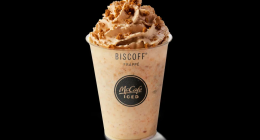
Opinions expressed by Entrepreneur contributors are their own.
Standing out in today’s crowded marketplace can be extremely challenging, especially for small businesses in a sea of major competitors. Winning the attention of customers requires a new approach. Consumers today no longer want to be treated like cattle being herded toward similar products. Instead, they want to feel special. They want unique experiences that are created just for them.
We all know that personalizing the customer experience is a great strategy. That’s why nearly 90% of marketers see a positive ROI after investing in personalized campaigns. These companies on average earn 40% more revenue than brands that don’t embrace personalization.
Unfortunately, over the last few decades, consumers have become desensitized to the old, boring methods of personalization. Consumers expect companies to go the extra mile when it comes to crafting personalized experiences. The rise of technology is unlocking new capabilities in the personalization space that will enable companies to successfully achieve impressive levels of hyper-personalization.
Related: Why a ‘Personal’ Customer Experience Is Critical to Your Business’ Success
1. AI-powered personalization
In the past, companies were only capable of personalizing marketing and customer experiences for broadly defined demographics such as gender, age, economic status and geographic location. Of course, consumers can still have numerous different needs, interests and preferences despite being in the same group.
The rise of artificial intelligence (AI) is changing the way companies personalize their customer experience by allowing customer experiences to be tailored to a very specific level. AI has the power to seamlessly create unique marketing and content for thousands of customers based on dozens of different data points.
2. Interactive experiences
Consumers don’t just want to buy products; they want to have exciting and memorable experiences. This is why experiential marketing has nearly a 40% success rate. In the digital space, the opportunities are practically limitless. Pairing experiences with personalization is a winning strategy.
Coca-Cola accomplished this with the introduction of their Freestyle Machines that provide an interactive experience while customers personalize their own flavor combinations. These experiences don’t have to exist in just the real world. Brands can also use augmented reality (AR) or virtual reality (VR) to create entirely unique, digital experiences for each customer.
Related: How Experiential Marketing Events Can Skyrocket Your ROI
3. Voice-activated personalization
More and more devices and applications are incorporating voice-activated features, digital assistants and chatbots to assist consumers with everyday tasks. These tools are perfectly positioned to gather important data and learn about the users’ preferences and routines through regular interaction. This information, along with preset preferences and prior activity, can then be used to send personalized recommendations.
4. Cross-channel personalization
Cross-channel personalization has emerged as a critical strategy for businesses aiming to create seamless and cohesive customer experiences across various touchpoints. In today’s interconnected digital landscape, customers expect consistency and relevance regardless of the channel they engage with.
For instance, a retail brand could recommend personalized products to its customers based on their past purchases and browsing history when visiting their website. Later, when the same customer visits the brand’s physical store, they can continue the conversation by sending targeted promotions via a mobile app that complements their online shopping preferences.
Leveraging advanced analytics, AI-powered algorithms and customer data platforms, businesses can gain insights into individual preferences and behaviors, allowing them to tailor content, offers and interactions across each of these channels.
Related: 3 Tips for Using Consumer Data to Create More Personalized Experiences
5. Predictive analytics
Predictive analytics takes personalization to the next level by leveraging advanced data to attempt to predict a consumer’s future behavior or anticipate their needs. The most obvious example is Amazon, which employs predictive analytics to analyze past purchase behavior, browsing history and demographic data to recommend additional personalized products to shoppers. By harnessing predictive analytics, businesses can forecast customer preferences, identify trends and proactively offer tailored recommendations and promotions. This strategic approach not only enhances customer satisfaction but also drives sales and fosters long-term loyalty.
Personalization is about more than just tailoring marketing messages to land a sale. The underlying benefits are much deeper. Personalizing the customer’s experience is a great way to build a connection with the customer and enhance brand loyalty. This, in turn, translates into happier customers and healthier revenue.
This article is from Entrepreneur.com









